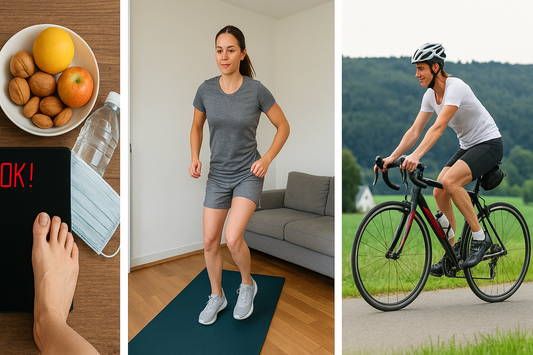
Soccer: 7 Types of Shots and How to Execute Them
Share
In soccer, finishing is one of the most important skills for any player. There are different types of shots, each suited to different game situations. In this article, we'll explore seven distinct shots—the chip shot, the flat-foot shot, the trivela shot, the foil shot, the power shot, the curved shot (banana), and the letter shot—and explain how to execute them correctly.

1. Cavadinha
How to Run:
- Approach the ball calmly and observe the goalkeeper's position.
- When shooting, place your supporting foot next to the ball.
- Use the bottom of your instep to give a light touch underneath the ball.
- Keep your ankle steady and make a short movement to gently lift the ball over the goalkeeper.
When to Use:
- When the goalkeeper leaves the goal and there is space to lift the ball.
- For one-on-one moves, deceiving the opponent with a subtle touch.
2. Plate
How to Run:
- Place your supporting foot next to the ball.
- Use the inside of your foot to shoot with precision.
- Keep your body slightly inclined to give you more control over your shot.
- Direct the ball into the corner of the goal with a precise touch.
When to Use:
- To finish with precision inside the area.
- In low shots or placed at an angle.
3. Trivela
How to Run:
- Position your supporting foot slightly behind the ball.
- Use the outside of your foot to give your shot an effect.
- Make a fluid motion and control the force to ensure the desired curve.
- Direct your body slightly to the side opposite the ball for better balance.
When to Use:
- To surprise the goalkeeper with an unexpected effect.
- For long-range shots or curved crosses.
4. Dry Leaf
How to Run:
- Position your supporting foot slightly to the side of the ball.
- Use the instep of your foot to hit the bottom of the ball with medium force.
- Lean your body back slightly to allow the ball to rise.
- Applies an effect so that the ball loses speed in the air and falls quickly.
When to Use:
- In long-range shots, especially in direct free kicks.
- To deceive the goalkeeper with an unpredictable trajectory.
5. Power Shot
How to Run:
- Place your supporting foot next to the ball and keep your body leaning slightly forward.
- Use the instep of your foot to apply maximum force to the ball.
- Keep your ankle firm and follow the shot with the movement of your leg.
- Focus on accuracy so your shot is powerful and targeted.
When to Use:
- For long distance shots.
- In situations where it is necessary to overcome a defensive barrier or a well-positioned goalkeeper.
6. Curve (Banana)
A shot that creates a curved effect, ideal for getting past barriers or goalkeepers.
How to run:
- Use the inside of your foot to create the desired curve.
- Lean your body in the opposite direction of the shot.
- The foot follow-through must be fluid to maximize the effect.
When to use:
- When taking direct free kicks, to get around the barrier.
- In cross shots inside the area, placing the ball at the far post.
7. Letter Finishing
A spectacular and unexpected shot, used when the ball is poorly positioned for the dominant foot.
How to run:
- Place your non-dominant foot next to the ball.
- Cross your shooting leg behind your supporting leg.
- Contact the ball with the instep of your foot to gain power and accuracy.
When to use:
- When the ball is on the wrong side for your strong foot and there is no time to reposition your body.
- To surprise opponents and goalkeepers with an unexpected shot.
General Tips to Improve Your Shot:
- Practice each type of shot regularly to improve accuracy and power.
- Observe the goalkeeper's position before finishing.
- Work on strength and balance to maintain a consistent shot.
- Experiment with different approaches to find the shot that best suits your playing style.
Mastering these five types of shots can make all the difference when finishing a play. Experiment with each one in training and apply them as needed in the game to become a more complete player!


